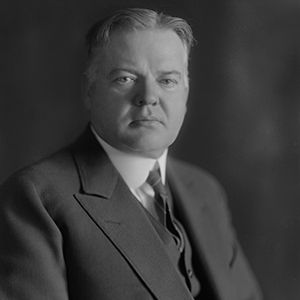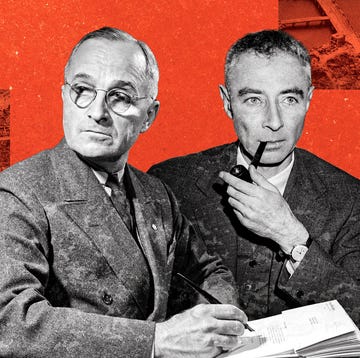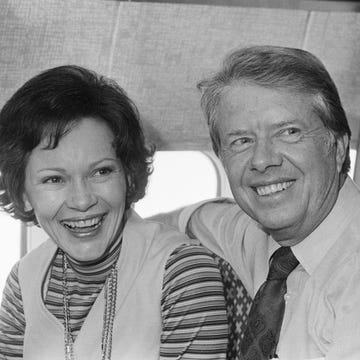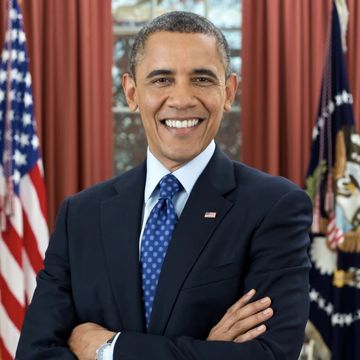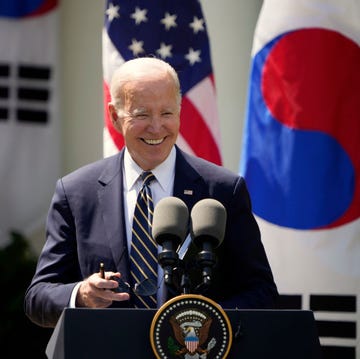(1874-1964)
Who Was Herbert Hoover?
Herbert Hoover gained a reputation as a humanitarian in World War I by leading hunger-relief efforts in Europe as head of the American Relief Administration. From there the Republican moved into the post of U.S. secretary of commerce and spearheaded the construction of the St. Lawrence Seaway and the Hoover Dam. In 1928, Hoover was elected president, but eight months later the stock market crash of 1929 occurred, ushering in the Great Depression. Hoover’s policies could not overcome the economic destruction and despair that resulted, and he lost his reelection bid in 1932.
Early Years
Hoover was born on August 10, 1874, in West Branch, Iowa, and was the first president born west of the Mississippi River. When Hoover was 6 years old, his father died. Three years later his mother also died, and Hoover was then raised in Oregon by his maternal aunt and uncle.
Humanitarian Efforts
A lifelong humanitarian, as an adult, Hoover was in China during the Boxer Rebellion (1900), and he organized the relief efforts for trapped foreigners. Four years later, he helped Americans stranded in Europe when World War I began, and for three years after, he headed the Commission for Relief in Belgium, helping to procure food for 9 million Belgians in the aftermath of the massive encroachment of German troops. His effectiveness prompted President Woodrow Wilson to appoint Hoover head of the Food Administration, which diverted American agricultural products overseas to American troops.
Hoover next served as head of the American Relief Administration, which helped post-WWI Europe feed its people. President Warren G. Harding then picked Hoover to be his secretary of commerce, as did President Calvin Coolidge after him. In this role, he was the driving force behind such projects as the St. Lawrence Seaway and the Hoover Dam.
President and Great Depression
When President Coolidge decided not to run for another term, Hoover was nominated as the Republican candidate in 1928. He ran against New York governor Alfred E. Smith and won in a landslide. During Hoover’s campaign, he famously said, “We in America today are nearer to the final triumph over poverty than ever before in the history of any land,” but less than a year later the stock market crash of 1929 struck, and the worst economic downturn in American history was upon Hoover’s administration.
Hoover’s plan to attack the Great Depression had as its backbone tax cuts and public works projects: keep more money in people’s pockets, and keep people working. He also contacted business leaders and urged them not to cut wages or lay off workers, and in 1932, he backed the establishment of the Reconstruction Finance Corporation, a lending institution intended to help banks and industries in their recovery efforts. Unfortunately, none of these approaches helped the foundering economy, and Hoover watched helplessly while businesses closed their doors and Americans sank into poverty. He also made a critical mistake in signing into law the Smoot-Hawley Act, which raised taxes on imports and prompted foreign nations to turn their backs on American-made goods when the country desperately needed sales.
When the election of 1932 came around, Hoover blamed the depression on factors beyond his control, but the public either didn’t care or wasn’t buying it, and he was trounced by Franklin D. Roosevelt.
Post-Presidency and Death
In the ensuing years, Hoover continually attacked government programs such as FDR’s New Deal in books he wrote, such as The Challenge to Liberty (1934) and the eight-volume Addresses Upon the American Road (1936–1961). He also delivered speeches on the matter, including “Against the Proposed New Deal” (1932) and “The New Deal and European Collectivism” (1936).
Hoover opposed American entry into World War II (until Pearl Harbor was attacked) and condemned American involvement in the Korean and Vietnam wars. He was working on another book when he died in New York City in 1964, at age 90.
The 31st president has been the subject of several biographies, including a multi-volume work by historian George H. Nash. In 2017, journalist Kenneth Whyte introduced a new profile to the collection, Hoover: An Extraordinary Life in Extraordinary Times, which explored the former president's lengthy record of public service and the events that shaped his personality and decision-making.
QUICK FACTS
- Name: Herbert Hoover
- Birth Year: 1874
- Birth date: August 10, 1874
- Birth State: Iowa
- Birth City: West Branch
- Birth Country: United States
- Gender: Male
- Best Known For: Herbert Hoover was the 31st president of the United States, whose term was notably marked by the stock market crash of 1929 and the beginnings of the Great Depression.
- Astrological Sign: Leo
- Schools
- Stanford University
- Death Year: 1964
- Death date: October 20, 1964
- Death State: New York
- Death City: New York
- Death Country: United States
Fact Check
We strive for accuracy and fairness.If you see something that doesn't look right,contact us!
CITATION INFORMATION
- Article Title: Herbert Hoover Biography
- Author: Biography.com Editors
- Website Name: The Biography.com website
- Url: https://www.biography.com/political-figures/herbert-hoover
- Access Date:
- Publisher: A&E; Television Networks
- Last Updated: April 16, 2021
- Original Published Date: April 2, 2014
